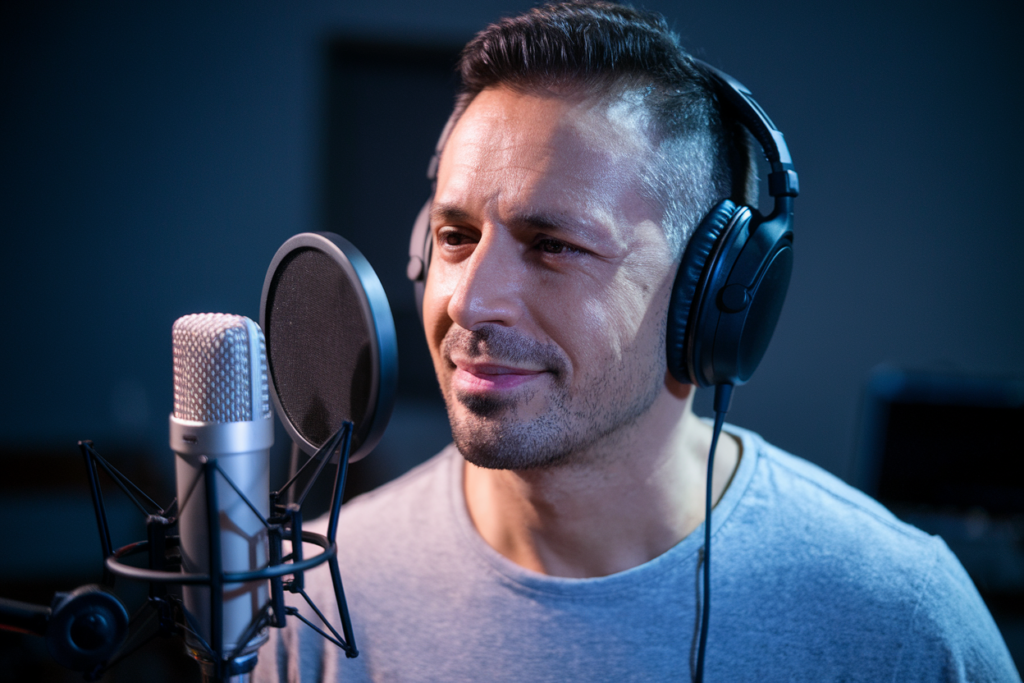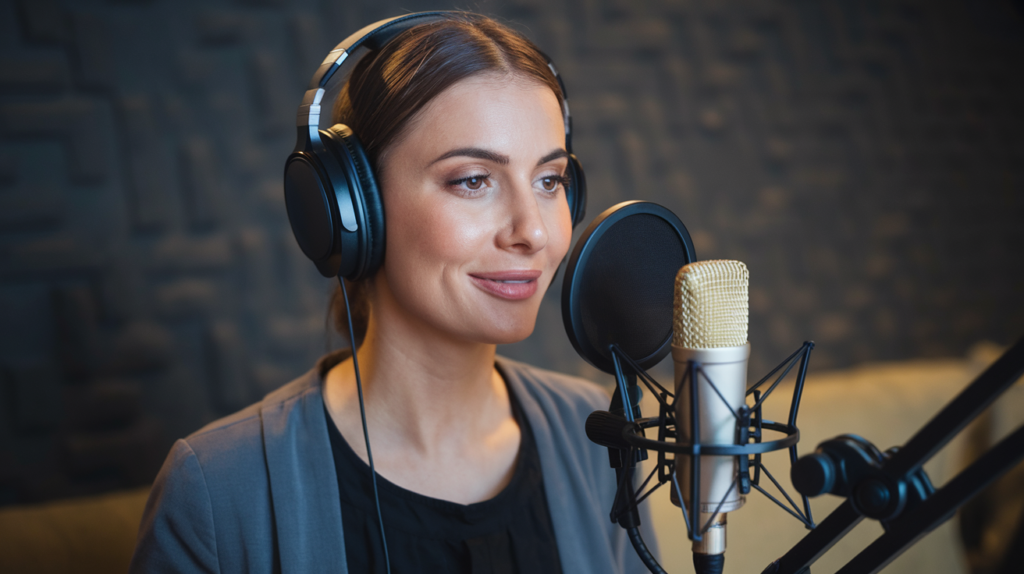Key Takeaways
- Understanding Accents: Turkish accents vary greatly by region, reflecting the country’s cultural diversity and presenting challenges for learners seeking a neutral accent.
- Neutral Turkish Accent Defined: A neutral Turkish accent is characterized by clarity in pronunciation, standard intonation, rhythmic flow, and the use of common vocabulary over regional expressions.
- Media Influence: Television and radio play a significant role in shaping perceptions of a neutral accent by consistently showcasing clear speech patterns typically associated with urban centers like Istanbul.
- Educational Impact: Language education emphasizes articulation and standard vocabulary usage, which aids learners in mastering an accessible form of Turkish that resonates across various regions.
- Challenges in Definition: Defining a neutral accent is complicated due to Turkey’s linguistic diversity; subtle variations exist even within urban centers like Istanbul.
- Importance for Voice Talent: Voice artists aiming for broad audience appeal should be trained in these nuances to ensure effective communication that engages diverse listeners.
Ever wondered if there’s such a thing as a neutral Turkish accent? You’re not alone. Many language learners and enthusiasts grapple with the idea of mastering Turkish without sounding too regional or heavy in dialect. With Turkey’s rich tapestry of cultures and languages, identifying a standard accent can feel like searching for a needle in a haystack.
Understanding Turkish Accents
Turkish accents vary significantly across different regions, reflecting the country’s rich cultural diversity. Each area has unique linguistic characteristics that influence pronunciation, intonation, and rhythm. This complexity can pose challenges for learners aiming to achieve a neutral accent.
A neutral Turkish accent typically aligns with the way Turkish is spoken in major urban centers like Istanbul. Pronunciation remains clear and distinct, avoiding local dialects’ nuances. You might find that many voiceover artists strive for this neutrality when creating content aimed at broad audiences.
For voice talent working on projects in Turkish, understanding these regional variations becomes essential. By mastering the intricacies of accents and pronunciation, you can enhance your skills as a voice artist or voice actor. Being aware of how accent differences impact communication ensures your work resonates well with diverse listeners.
Consider collaborating with professionals familiar with these subtleties if you’re producing content requiring a specific tone or style. Their expertise can help bridge any gaps between your vision and the audience’s expectations, making your project more engaging and effective.
Grasping the nuances of Turkish accents aids in achieving clarity while appealing to various audiences. Whether you’re looking to hire a voice over talent or refine your own skills as a voice over actor, appreciating these differences plays a crucial role in successful communication.
What Is a Neutral Turkish Accent?
A neutral Turkish accent represents an idealized form of the language, often characterized by clear pronunciation and minimal regional influence. This accent is typically associated with major urban centers like Istanbul, where diverse dialects converge.
Characteristics of a Neutral Turkish Accent
- Clarity in Pronunciation: A neutral Turkish accent features crisp articulation of consonants and vowels, making it easy for listeners to understand.
- Standard Intonation: The intonation pattern tends to be even and consistent, lacking the exaggerated melodic swings found in some regional accents.
- Rhythmic Flow: Speech flows smoothly without abrupt pauses or changes in tempo, enhancing overall comprehension.
- Neutral Vocabulary Usage: Common expressions are favored over colloquialisms specific to certain regions, ensuring broader accessibility.
Differences from Regional Accents
- Distinct Pronunciation Variances: Regional accents may emphasize different phonetic elements that can alter how words sound compared to a neutral accent.
- Intonation Patterns: Unlike the uniformity of a neutral accent, regional variations often exhibit unique musical qualities that reflect local culture.
- Cultural Influences on Speech: Each region brings its own cultural nuances into speech patterns, which can lead to distinctively flavored expressions not present in a neutral context.
- Audience Perception: Listeners might identify speakers with strong regional accents as coming from particular areas, whereas those using a neutral accent appeal to a wider audience.
For voice talent aiming for broad reach across Turkish-speaking populations, mastering this neutral accent proves beneficial for effective communication and engagement with diverse listeners. Understanding these subtleties enhances your skills as a voice artist or voice actor while ensuring clarity resonates within various contexts.
The Role of Media and Education
Media and education significantly shape the understanding and perception of accents, including a neutral Turkish accent. Through effective programming and instructional methods, these sectors play a crucial role in promoting clarity in communication.
Influence of Television and Radio
Television shows, films, and radio broadcasts often feature a neutral Turkish accent, especially those produced in major urban centers like Istanbul. This exposure helps normalize the idealized form of the language for viewers and listeners. By engaging with content featuring clear pronunciation and standard intonation, audiences internalize these speech patterns. As you seek voiceover talent for projects targeting diverse demographics, consider selecting professionals who use this neutral accent to ensure broad audience appeal.
Language Education Practices
Language education practices also contribute to developing a neutral Turkish accent among learners. Many language courses emphasize clear articulation, standard vocabulary usage, and proper intonation techniques. These educational frameworks guide learners toward mastering an accessible form of Turkish that resonates across different regions. When hiring voice artists or voice actors for projects aimed at non-native speakers or broader audiences, prioritize those trained in these practices to enhance communication effectiveness.
Perspectives from Linguists and Language Learners
Linguists and language learners provide valuable insights into the concept of a neutral Turkish accent. Understanding these perspectives can enhance your approach, especially if you’re engaging voice talent for projects.
Insights from Linguistic Studies
Linguistic studies emphasize that a neutral Turkish accent often reflects urban speech patterns, particularly those found in Istanbul. Research shows that this accent minimizes regional variations, offering clarity essential for effective communication. Many scholars argue that exposure to media—like television and films—plays a crucial role in shaping perceptions of this idealized form of spoken Turkish. When you listen to popular shows or radio broadcasts, you may notice consistent pronunciation and intonation patterns that define the neutral accent. This consistency aids both comprehension and retention for learners at all levels.
Personal Experiences of Learners
Language learners frequently describe their journey toward mastering a neutral Turkish accent as challenging yet rewarding. Many find that focusing on clear articulation helps them navigate the intricacies of pronunciation more effectively. Some students report practicing with native speakers or through language exchange programs, which enhances their confidence in speaking without strong regional traits. Incorporating listening exercises featuring voice actors who exemplify the neutral tone can also be beneficial; it allows learners to mimic sounds and rhythms they hear.
If you’re looking to hire voice artists for various projects, understanding these insights not only enriches your knowledge but also guides you toward selecting voiceover talent who can deliver content resonating well with diverse audiences. Choosing professionals trained in these nuances ensures effective communication and engagement with viewers or listeners across different backgrounds.
Challenges in Defining a Neutral Accent
Defining a neutral Turkish accent poses several challenges, primarily due to Turkey’s rich linguistic diversity. You’ll notice that accents vary significantly across regions, each with unique pronunciation and intonation patterns. This makes it tough to pinpoint what constitutes a ”neutral” accent.
Urban centers like Istanbul often set the standard for what many consider neutral. Yet even here, subtle variations exist based on social contexts and local influences. When you aim for clarity in communication, understanding these nuances matters. A voice actor mastering this idealized form of Turkish can help bridge gaps between varied audience expectations.
Another challenge lies in the influence of media and education on accent perception. Television shows and films frequently showcase urban speech patterns, reinforcing particular ways of speaking that may not represent all regional accents. This selective exposure can skew your understanding of neutrality in pronunciation.
Language learners face their own hurdles as they navigate different dialects while trying to achieve clarity. Many describe their journey as rewarding yet difficult—especially when engaging with native speakers or practicing listening skills through various media sources. These experiences enhance your ability to discern between regional characteristics and the desired neutral tone.
When selecting voice talent for projects targeting diverse audiences, prioritizing those trained in standard articulation techniques is essential. They offer clear, engaging communication that resonates with listeners from different backgrounds. Understanding these dynamics helps ensure effective collaboration between you and potential voiceover actors who can bring your project vision to life while maintaining accessibility across demographics.
Conclusion
Navigating the complexities of Turkish accents can be a rewarding journey for learners and voice talent alike. Embracing a neutral Turkish accent not only fosters clearer communication but also enhances your connection with diverse audiences. By focusing on the urban speech patterns prevalent in major cities like Istanbul you can cultivate an idealized form of the language that minimizes regional variations.
The role of media and education cannot be overstated as they play significant parts in shaping perceptions of this neutral accent. Engaging with resources that highlight clear pronunciation and intonation will further aid your mastery. Ultimately investing time in understanding these nuances will elevate your skills and ensure effective interactions across Turkey’s rich cultural landscape.
Frequently Asked Questions
What is a neutral Turkish accent?
A neutral Turkish accent refers to an idealized form of the language characterized by clear pronunciation, standard intonation, and smooth rhythmic flow. It is commonly associated with urban centers like Istanbul, where speech sounds distinct and free from strong regional influences.
Why is mastering a neutral Turkish accent important?
Mastering a neutral Turkish accent is essential for effective communication, especially in reaching diverse audiences. It enhances clarity and allows speakers to connect better with listeners from various backgrounds while minimizing misunderstandings caused by regional dialects.
How do accents vary across Turkey?
Turkish accents differ significantly across regions due to the country’s rich cultural diversity. Each area has unique linguistic characteristics that influence pronunciation, intonation, and rhythm, making it challenging to define a single standard accent.
How does media influence perceptions of the neutral Turkish accent?
Media plays a significant role in shaping perceptions of the neutral Turkish accent by frequently showcasing this form in television shows and films. This exposure helps normalize clear pronunciation and proper intonation among audiences.
What challenges do language learners face when aiming for a neutral Turkish accent?
Language learners often encounter difficulties navigating different dialects while striving for clarity. The complexity of varying regional accents can make mastering a neutral tone challenging yet rewarding as they engage with native speakers and practice listening skills.
Why should voice talent be trained in a neutral Turkish accent?
Voice talent trained in a neutral Turkish accent can enhance communication effectiveness in projects targeting diverse demographics. Their understanding of standard articulation techniques ensures clear delivery that resonates well with varied audiences.







